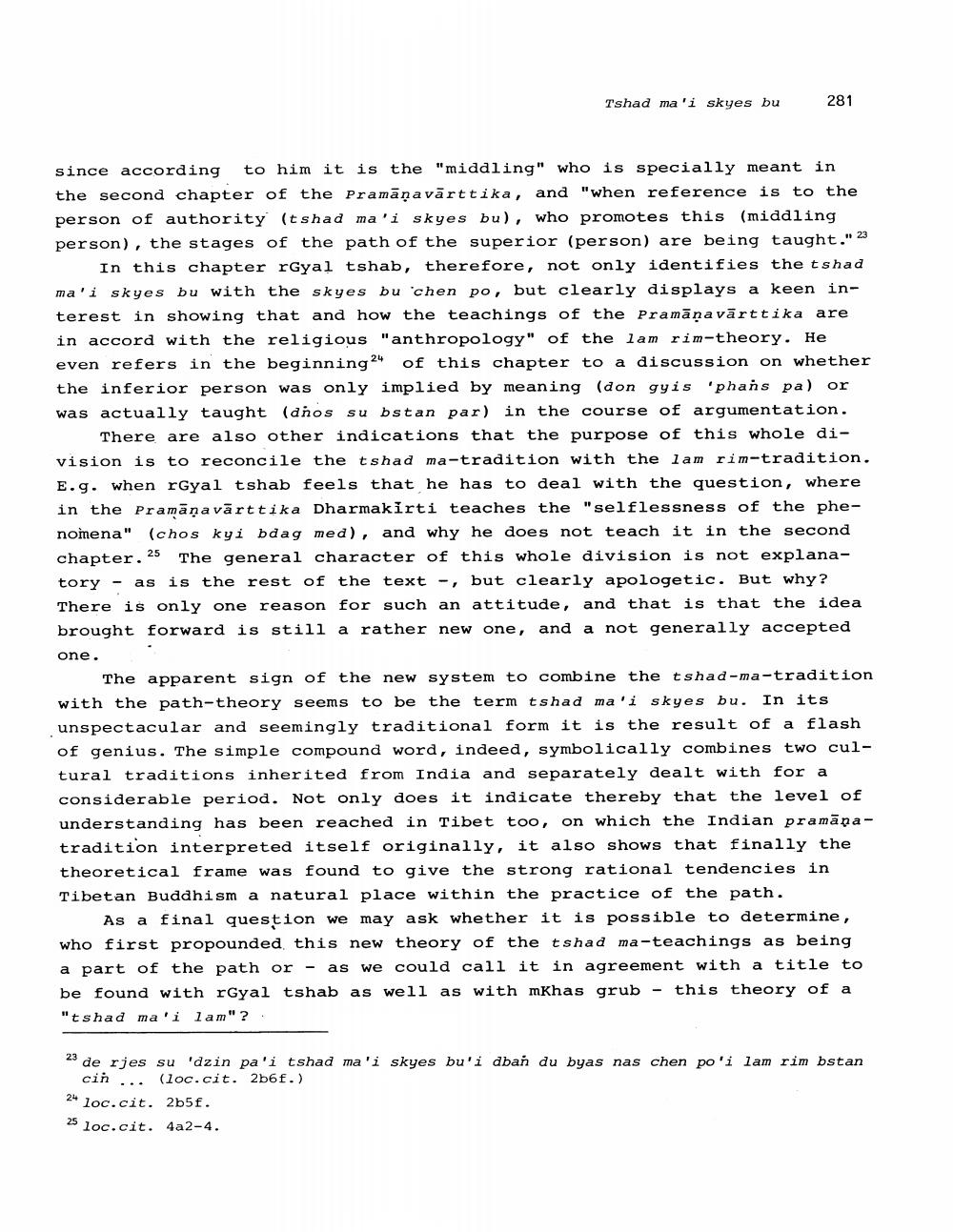Book Title: Meaning And Historical Significance Of Term Author(s): Ernst Steinkellner Publisher: Ernst Steinkellner View full book textPage 7
________________ one. since according to him it is the "middling" who is specially meant in the second chapter of the Pramāņa vārt tika, and "when reference is to the person of authority (tshad ma'i skyes bu), who promotes this (middling person), the stages of the path of the superior (person) are being taught." 23 In this chapter rGyal tshab, therefore, not only identifies the tshad ma'i skyes bu with the skyes bu chen po, but clearly displays a keen interest in showing that and how the teachings of the Pramāṇavārt tika are in accord with the religious "anthropology" of the lam rim-theory. He even refers in the beginning 24 of this chapter to a discussion on whether the inferior person was only implied by meaning (don gyis 'phans pa) or was actually taught (dños su bstan par) in the course of argumentation. There are also other indications that the purpose of this whole division is to reconcile the tshad ma-tradition with the lam rim-tradition. E.g. when rGyal tshab feels that he has to deal with the question, where in the Pramāņa vārttika Dharmakirti teaches the "selflessness of the phenomena" (chos kyi bdag med), and why he does not teach it in the second chapter. The general character of this whole division is not explanatory as is the rest of the text, but clearly apologetic. But why? There is only one reason for such an attitude, and that is that the idea brought forward is still a rather new one, and a not generally accepted - Tshad ma'i skyes bu 25 281 The apparent sign of the new system to combine the tshad-ma-tradition with the path-theory seems to be the term tshad ma'i skyes bu. In its unspectacular and seemingly traditional form it is the result of a flash of genius. The simple compound word, indeed, symbolically combines two cultural traditions inherited from India and separately dealt with for a considerable period. Not only does it indicate thereby that the level of understanding has been reached in Tibet too, on which the Indian pramāņatradition interpreted itself originally, it also shows that finally the theoretical frame was found to give the strong rational tendencies in Tibetan Buddhism a natural place within the practice of the path. As a final question we may ask whether it is possible to determine, who first propounded this new theory of the tshad ma-teachings as being a part of the path or as we could call it in agreement with a title to be found with rGyal tshab as well as with mKhas grub this theory of a "tshad ma'i lam"? 23 de rjes su 'dzin pa'i tshad ma'i skyes bu'i dban du byas nas chen po'i lam rim bstan cin... (loc. cit. 2b6f.) 24 loc.cit. 2b5f. 25 loc. cit. 4a2-4.Page Navigation
1 ... 5 6 7 8 9 10 11
